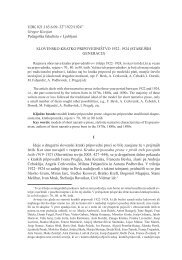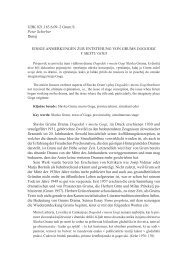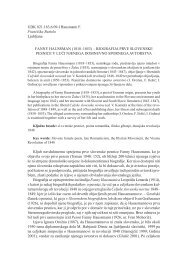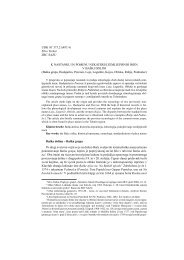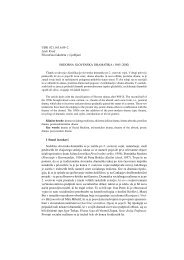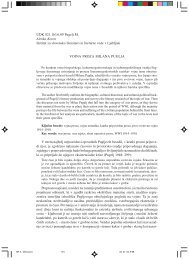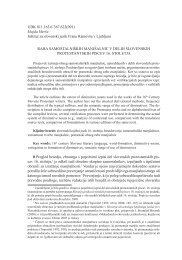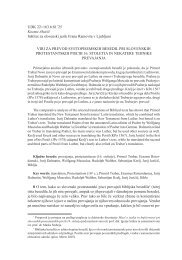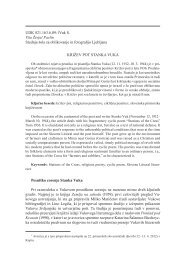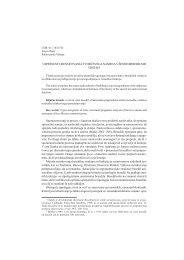UDK 821.163.6.09–1 Kovič K. Andreja Žižek Urbas Filozofska ...
UDK 821.163.6.09–1 Kovič K. Andreja Žižek Urbas Filozofska ...
UDK 821.163.6.09–1 Kovič K. Andreja Žižek Urbas Filozofska ...
You also want an ePaper? Increase the reach of your titles
YUMPU automatically turns print PDFs into web optimized ePapers that Google loves.
710 Slavistična revija, letnik 54/2006, št. 4, oktober–december<br />
context can also be the motif-thematic segment in the cycles Pastorale and Balade o bratu in<br />
sestri. Topics like loss of virginity with a man of a higher social status and the incest relationship<br />
between a brother and a sister are also characteristic of folk poetics. However, from no segment<br />
could one draw the conclusion that <strong>Kovič</strong> really borrowed these topics from the tradition of<br />
Slovene folk poetry. The analysis confi rmed the fi rst three points, while the fourth point reveals<br />
<strong>Kovič</strong>’s creative shift, which changes and undermines folk structure. The dramatic event, which<br />
is the distinctive attribute of the folk ballad, in <strong>Kovič</strong>’s poetry becomes traumatic, while the<br />
endings are neither happy nor tragic, but, instead, undecided, motionless, and uneasy: the cycle<br />
Bezgove ure ends with the realization of the horrors of sexuality and death; Pastorale end with<br />
winter, devotion of maids, and men’s sleep; in Balade o bratu in sestri everything is subjected<br />
to winter and oblivion. The protagonists of Bezgove ure and Pastorale are boys, girls, uncles,<br />
fathers, masters, hunters, brides, and maids, i.e., not individuals. The plural form reinforces the<br />
mechanism of inevitability and the sense of generality of the events. The groups of characters at<br />
fi rst glance seem realistic, integrated in the events and characterized by the narrative space and<br />
time. But deep down these are archetypical pairs: boys and girls; masters, hunters, horsemen,<br />
and maids, shepherd-girls, brides, and brother and sister, and – including the cycle Genesis in the<br />
analysis – Adam and Eve. All of them possess a variation of the same archetypical situation, i.e.,<br />
the recognition of the truth of life, evident in the duality or even equivalence of eroticism and<br />
death. The claim that Slovene folk ballad represented a direct source for <strong>Kovič</strong>’s ballad cycles<br />
in the collection Labrador remains on the level of unconfi rmed speculation. The paths leading<br />
to the collection Labrador are undoubtedly very complicated, intertwined with the tradition of<br />
Slovene art ballad, but they unmistakably refl ect the tradition of the Slovene folk ballad.<br />
SR 4 - 2006.indd 710 7.2.2007 11:10:38



